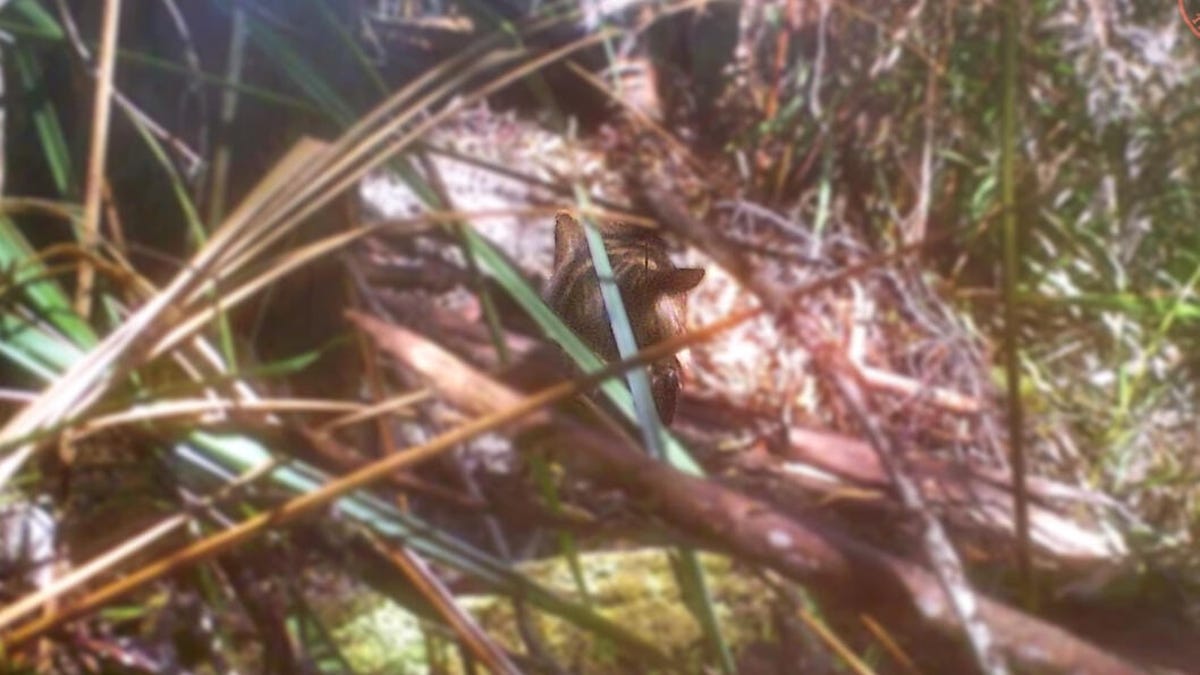Is that a thylacine? Camera trap footage released but experts dismiss claims of rediscovery
"Make up your own mind," urges Neil Waters, who captured the images.

Does the footage show a thylacine ... or something else?
Is the Tasmanian tiger, or thylacine, lurking in the wilds of Australia? The scientific consensus is that the carnivorous marsupial is long extinct, with the last known thylacine dying in captivity in 1936. Last week, one man believed he had evidence to challenge the consensus... and then the internet hype machine took over.
Neil Waters, president of the Thylacine Awareness Group of Australia, posted a video to YouTube claiming he had discovered a "family" of thylacines on camera traps set up in the Tasmanian wilderness. He explained that he'd sent the footage to the Tasmanian Museum and Art Gallery for analysis by thylacine expert Nick Mooney. For 24 hours, the wildlife community was buzzing.
But on Feb. 23, TMAG and Mooney released a statement explaining the creature snapped in the footage was most likely a Tasmanian pademelon, a short, stout marsupial similar to a wallaby.
"Nick Mooney has concluded, that based on the physical characteristics shown in the photos provided by Mr Waters, the animals are very unlikely to be thylacines, and are most likely Tasmanian pademelons," TMAG told CNET at the time.
Now the footage has been released. Waters uploaded the latest video, titled "THYLACINE JOEY PHOTO" on Sunday, in which he reveals the three images that he believes are likely the extinct marsupials and not a cat or pademelon.
Waters claimed last week the footage showed "not ambiguous" evidence of the thylacine, but the video (which you can view below), is far from conclusive. In the video, Waters says there are several features that point to this being a Tasmanian tiger and not a pademelon, as Mooney suggests. Waters believes the images show stripes, a straight tail and shiny, leathery hocks -- all features of the thylacine.
And Waters isn't budging. He signs off the video with, "Enjoy looking at a baby thylacine walking through the bush of northern Tasmania."
The footage has not convinced Mooney or the dozens of commentators on Waters' YouTube video. Mooney sent CNET a six-page assessment of the four photos presented in Waters' video on Monday. Of the three color photos provided to Mooney, he spends the most time analyzing the photo at the top of this image. Much is made of the apparent banding -- or stripes -- on this creature, but Mooney believes these are "a combination of narrow shadows(from sticks and cutting grass) and natural parts in the fur."
Why does he believe these are Tasmanian pademelons? "It boils down to animal colour, lack of bands, body shape and some foot detail," he says.
"My assessment strongly implies advantages of video over stills in such trail cameras which are an excellent tool for ethical searches and survey," Mooney writes. "If these were videos not stills there would have been no question."
Other experts don't think the images were really worth the wait.
"Given that the thylacine has not been seen for 85 years, the likelihood it is something else is by far the most logical conclusion," says Andrew Pask, a marsupial evolutionary biologist at the University of Melbourne. "It could easily be a cat, dog or wallaby based on the images."
Pask, whose work on thylacine genetics sees him flooded with identification requests each year, says this is "one of the least convincing" images he's seen. Even if the evidence was more solid, photos and videos cannot, alone, prove the existence of the thylacine.
"Nobody can adequately look at a video and say that's definitely a thylacine, without some DNA evidence," Pask told CNET last week. "We've got to have a hair sample, a scat sample, something that can back it up."
Update: Added Mooney's assessment.

